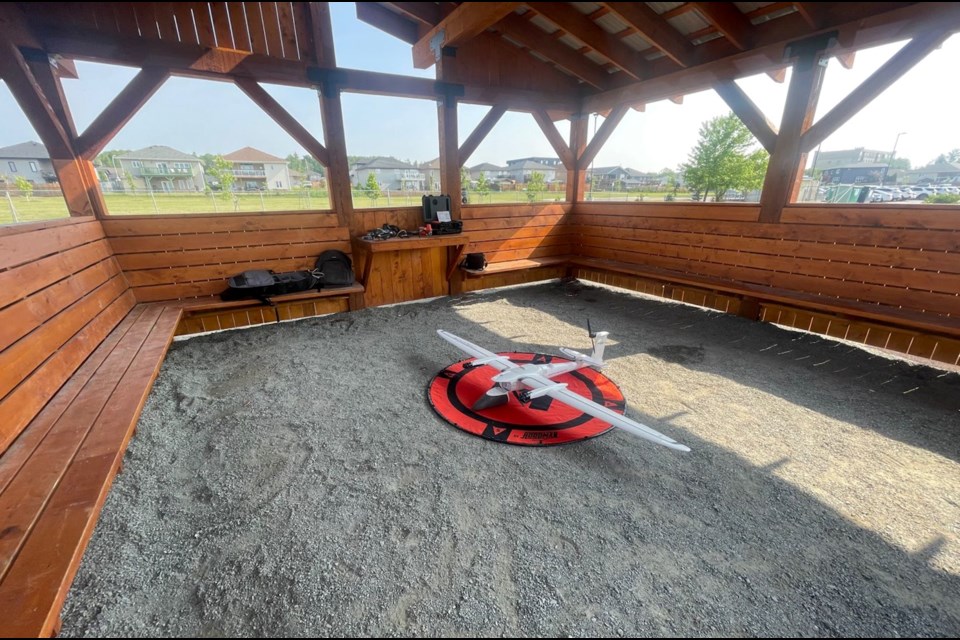Drones have fascinated millions of people around the world. It’s like being a pilot without the flying lessons – up until now, at least.
We’ve marvelled over social media posts featuring Hollywood-quality shots of impossibly high waterfalls, shredding snowboarders, and breaching humpback whales.
Of course, drones have also become a useful tool in many industries. With costs coming down and the number of ways you can use them going up, more and more people are thinking about a career in drone piloting.
“It is a tool that is rapidly evolving,” said Alex Bilyk of Thunder Bay, forest inventory innovation manager at Silvacom, a natural resources company.
“Across Canada, you’re seeing their usage go up.”
He said that in forestry for example, they are handy for getting a quick bird’s eye view of surrounding vegetation.
As of June 2023, there were 90,645 drones registered with Transport Canada, 89,022 Basic Pilot Certificates issued, and 10,573 Advanced Pilot Certificates issued. Those numbers are up roughly 45 per cent from two years ago.
Alex Bilyk first got excited about drones while watching a TED Talk about them in 2013.
Back then, he managed the LU-CARIS (Centre for Application of Resources Information System) Lab at Lakehead University.
“We (LU-CARIS) heavily adopted drones and got into the space in a big way because from a remote sensing aspect, it democratizes access,” Bilyk said.
Before that point, the only practical way to take aerial images was during expensive airplane or helicopter flights. Drones haven’t replaced these other videography platforms yet, but they can image smaller areas efficiently.
Right now, the vast majority of drone pilots specialize in something else, Bilyk said. In forestry for example, GIS specialists use drones to collect vegetation data that they’ll crunch later. The drone is another tool in their toolkit.
Other examples include real estate agents flying drones to take videos of their listings, videographers and photographers who offer high-angle shots, and environmental consultants or mine staff who use them for monitoring tailing ponds.
Want to read more stories about business in the North? Subscribe to our newsletter.
Canada follows international standards regulated by Transport Canada. Flying any drone less than 250 grams does not require a certificate. But for most industry jobs, you’ll need at least a Transport Canada Pilot Certificate – Basic Operations. This is a one-time certification that simply requires you to understand basic safety regulations and pass an online test.
However, a quick review of positions on Indeed.ca reveals that most employers require or at least want you to have a Pilot Certificate – Advanced Operations. This is much more comprehensive and involves registering your drone, taking an advanced online knowledge test, and passing an in-person flight review.
Currently, most flights must be done in Visual Line-of-sight (VLOS), which means you need to physically see the drone at all times with normal vision (e.g. no binoculars). In June 2023, Transport Canada announced proposed rules for flying Beyond Visual Line-of-sight (BVLOS), which are now in public consultation.
“Canada is one of the first countries in the world to propose comprehensive regulations for routine beyond visual line-of-sight drone operations,” Transport Canada stated in a news release.
That would open up the UAV pilot profession in a big way. Certain supplies including medications could be sent by drone to fly-in First Nations faster. In the natural resources sector alone, there are many possible applications including pipeline monitoring and vegetation mapping for site planning, Bilyk said.
The Ministry of Natural Resources and Forestry could monitor forest fires more safely.
“There are going to be niches where (drones) really fill a gap where we’ve had challenges,” Bilyk said.
Although the regulations aren’t written yet, it’s easy to imagine that BVLOS pilots will undergo more rigorous testing, closer to that of an aircraft pilot.
Bilyk said the premier program in Canada is the Professional Remotely Piloted Aircraft Systems program at the Southern Alberta Institute of Technology (SAIT) in Calgary.
This new program, which is wait-listed as of this writing, promises to “teach you all aspects of operating drones for commercial use.”
The 15-week program includes courses on BVLOS, operations and planning, and “flight school” for remotely piloting “aircraft systems.”
There are other programs in Canada, Bilyk said, so it’s worth looking to see what appeals most.
But for those who are getting into the natural resources sector, an Advanced Operations certificate and some experience is all you need at the moment. Many companies will train their employees, though having that experience ahead of time would be an asset for any job applicant.
“If someone has an interest in engineering, forestry, or mining, you’re going to learn a lot of the GIS background of mapping. (Drone operation) is just a natural extension of that,” he said. “It’s a skill that’s only going to help make them employable.”
